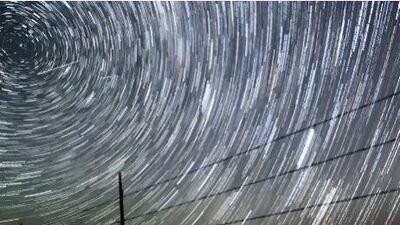DUBAI // Stargazers who missed their chance to photograph the Perseid meteor shower last week should not be too disappointed - they will soon get another chance, experts say.
Clouds and air traffic made it difficult to get a good-quality shot, said Jason Dalmeida, an organiser at the Emirates Photography Club.
He believes amateur photographers will get better pictures during the Leonids meteor shower in November and the Geminids shower the following month..
"The Geminids shower will be the best of the best," said Hasan Ahmad Al Hariri, of the Dubai Astronomy Group. "That will give us a frequency of a 100-plus meteors per hour."
He said people should contact the club nearer the time to find out where they were going to watch. "There will be people there giving tips on how to take photographs of the showers," he said.
Mr Dalmeida suggested photographers should prepare over the next few months by ensuring they have the right equipment. "The basic things they need are a really wide lens, a tripod, a good SLR and an intervalometer," he said.
A remote intervalometer will take a 30-second exposure photograph every minute and photographers can then use photo-editing software to stitch the images together and capture multiple streaking paths of the passing meteors.
Mr Dalmeida said the alternative to the intervalometer was to set the camera on a very long exposure of about 90 minutes, but the results could be hampered by passing aeroplanes or clouds. "It is quite subjective and you have to know the concepts and how to apply them in each situation," he said.
For a less technical way to enjoy the showers, Mr Al Hariri recommended downloading one of the many mobile phone apps.
Nasa Space Images, free for iPhones and Android, provides star maps and images to help you decipher what you are looking at in the night sky.
Others include Star Walk, Mobile Observatory and Pocket Universe.

